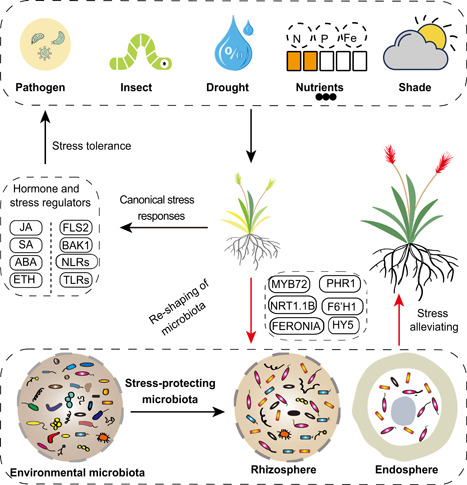Figure 1.

A novel layer of stress tolerance in plants: reshaping a stress‐alleviating microbiota. Plants have developed sophisticated genetic regulators to combat the biotic and abiotic stressors in terrestrial ecosystems, including pathogen infection and insect feeding, nutrient deprivation (e.g., deficient in nitrogen, phosphorus, and iron), drought, low light, or far‐red light‐enriched conditions (shade). The internal stress‐responsive pathways in plants have been widely studied (black arrows). Plants mainly utilize immune hormones (JA, jasmonic acid; SA, salicylic acid) to combat pathogen infections, and abscisic acid (ABA) and ethylene (ETH) as major abiotic stress‐responsive hormones to orchestrate stress responses. The plant membrane (FLS2, BAK1) or cytosol‐localized immune receptors (NLRs, TLRs) mediate the recognition of microbe‐related molecular patterns or pathogen effectors, which boost plant immune responses upon infection. In addition, emerging studies revealed that diverse plant genes (MYB72, NRT1.1B, FERONIA, PHR1, F6'H1, HY5) were positively involved in reshaping the microbiota, which might be a novel layer of stress tolerance strategies during evolution
